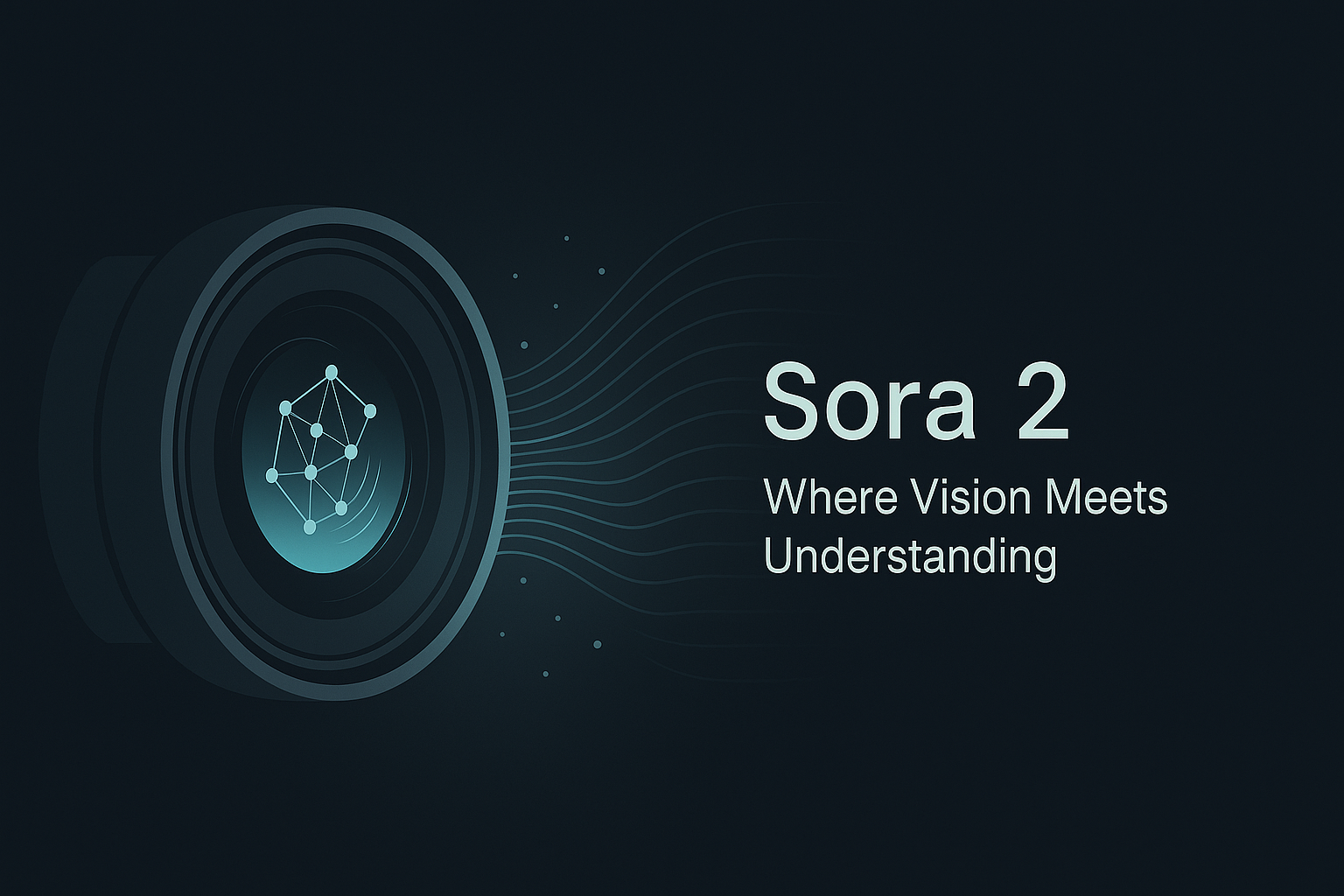Sora 2 – Where Vision Meets Understanding

In under a year, OpenAI’s Sora has advanced from generating simple moving images to simulating dynamic, physically consistent worlds — a leap in capability that took language models nearly five years to achieve.
Today marks the arrival of Sora 2, OpenAI’s new flagship model for video and audio generation — and it’s more than just a visual upgrade. It represents a breakthrough in how AI perceives and predicts the physical world.
From Pixels to Physics
When OpenAI released the first version of Sora in February 2024, it felt like the GPT-1 moment for video. For the first time, generative models could produce coherent, multi-second clips with consistent motion and depth — showing early signs of object permanence and spatial awareness.
Sora 2 takes that foundation and scales it into a world simulation system — one capable of understanding not just how things look, but how they move, sound, and interact over time.
What Makes Sora 2 Different
Unlike its predecessor, Sora 2 integrates both video and audio generation, producing synchronized, high-fidelity scenes with realistic motion and sound design.
Behind the scenes, the model has been trained with far more extensive video pre-training data, enabling it to simulate physical dynamics like gravity, reflection, and fluid motion with remarkable accuracy.
This milestone echoes the trajectory of OpenAI’s language models — from GPT-1’s rough text patterns to GPT-4’s nuanced reasoning. The difference? Instead of learning grammar and semantics, Sora 2 learns the language of the physical world.
The Science Behind the Leap
The true innovation behind Sora 2 lies in world modeling — teaching AI to predict what should happen next in a sequence, frame by frame, based on physics and context.
- How light changes throughout the day,
- How objects retain identity across motion,
- And how sound behaves when space and materials change.
In other words, Sora 2 doesn’t just render what it sees — it understands why things happen. This makes it a powerful testbed for the next generation of multi-modal intelligence.
Real-World Implications
The impact of Sora 2 extends beyond AI research. Its real-world potential spans industries:
- 🎬 Filmmakers and creators can pre-visualize complex scenes in seconds.
- 🧪 Researchers and educators can simulate experiments or natural phenomena.
- 🏢 Businesses and marketers can create cinematic product videos or brand stories instantly.
Perhaps most intriguingly, Sora 2 opens the door to AI agents trained within simulated worlds — allowing them to learn from richly rendered, physically accurate environments before acting in the real one.
A Glimpse Into the Future
World simulation is more than a feature — it’s a path toward Artificial General Intelligence. By grounding models in physics, motion, and sensory data, we move closer to AIs that can reason about cause and effect, not just correlate patterns.
If Sora 1 was the first step toward visual intelligence, Sora 2 represents the moment of comprehension. What comes next — perhaps interactivity, real-time rendering, or extended multi-minute scenes — could redefine creativity itself.
The Reality Engine of AI
In less than twelve months, Sora evolved from generating convincing pixels to simulating believable physics. That’s more than progress — it’s acceleration.
With Sora 2, OpenAI isn’t just building a better video model; it’s teaching machines how to understand the world they generate. And for anyone following the evolution of AI, that’s a milestone worth watching closely.